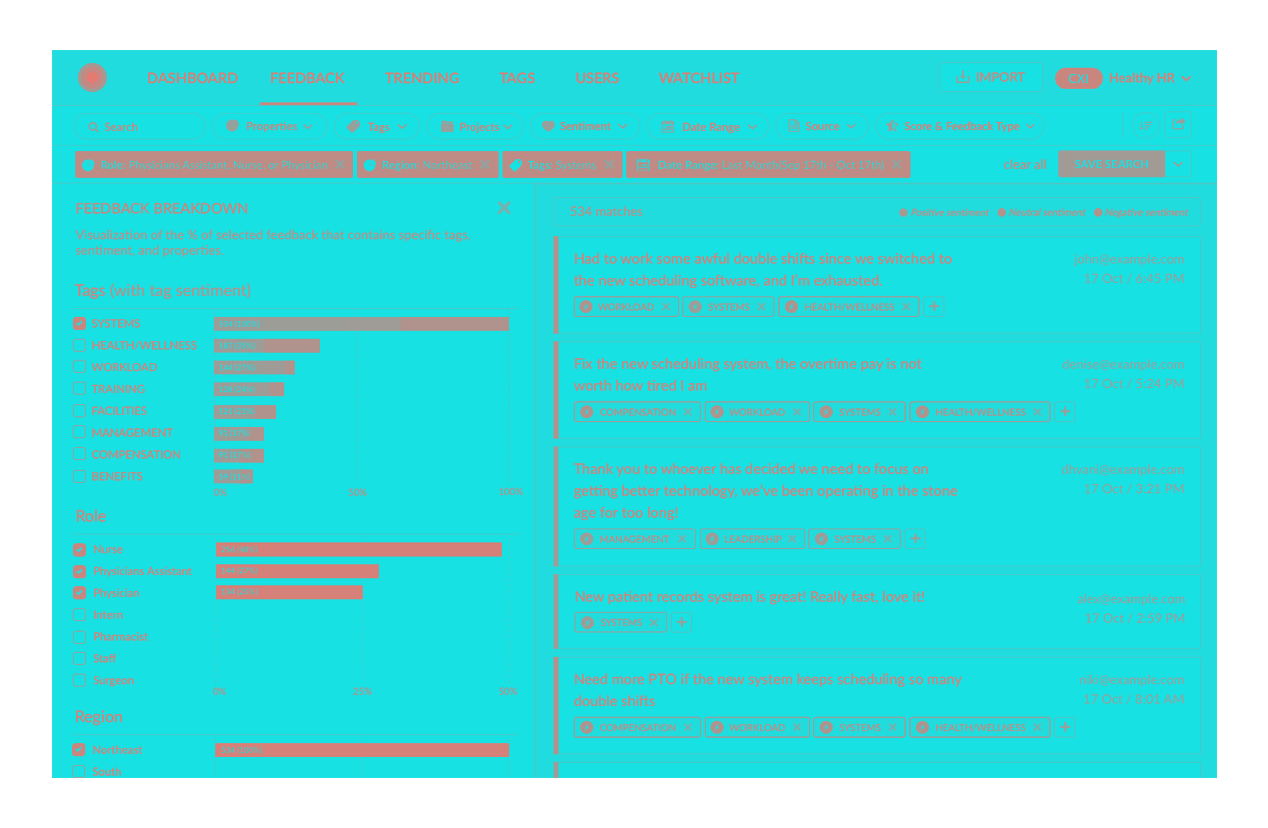Wootric Gets the Pulse of Customer Happiness
A good salesperson sells a product. A great one sells an experience. What’s the difference?
Feedback going forward
Experience goes beyond the use-value of the goods/services sold and encompasses the buyer’s expectations, feelings, ease or difficulty of use, and engagement with the brand.

Wootric, a customer-happiness survey platform, is such a tool to help a good sales team become a great one.
Described as “an elegant micro-survey;” Wootric takes the most important questions, delivers them to customers through a flexible variety of channels, takes seconds for them to complete, and constantly updates the aggregate results.
Of course, it’s not just about results. Wootric’s analytics are aimed not at looking back at how we did, but forward at how we could do better.
The right kind of question
Measuring customer happiness begins with asking questions, and three questions, in particular, have each become standards in their own right. These three questions take the all-too-familiar form of acronyms, and they are:
CSAT - Customer Satisfaction
NPS - Net Promoter Score
CES - Customer Effort Score
The questions are not only after different kinds of retroactive insights but more importantly, they lead to different kinds of actionable strategies.

CSAT
How satisfied are you with this product or service?
The “consumer satisfaction” question focuses on the individual product or service that a user has bought or subscribed to. Rather than looking for more abstract answers, like the consumer’s attitude towards the company, CSAT is more about consumer behavior.
CSAT scores help a company pinpoint specific problems, which lead to concrete decisions about how to improve a product or service, or even whether to discontinue or reinvent something.
NPS
How likely are you to recommend this brand or company to someone else?
Almost the opposite of CSAT, the “net promoter score” zooms out from the fine details of an actual good or service and gets at the more general attitude towards the company or brand. Unlike gauging the behavior of users as in CSAT, NPS might give you an idea of their intentions.
One problem here is that, when it comes to negative NPS scores, it could be hard to know what exactly the problem is. NPS aims to help a company with higher-level decisions, for example with branding and marketing strategies.
CES
How easy was it to use this product or service / to interact with this company?
The focus of the “customer effort score” is not feelings or intentions, but the more practical question of whether or not a product, service or company delivered value as expected, and without complications or difficulty.
Some argue that this is the best way to gauge customer happiness, possibly because it’s the easiest to answer unreflectingly. CES can apply to specific products or services, or be used to judge a company more broadly.
Survey Wootric’s way
Wootric’s surveys—CSAT, NPS or CES—are translated into any language, so you know you’re results won’t be corrupted by misunderstandings, or skewed by dominant language demographics.
Users get surveys across the most basic channels: web, email, SMS, or a mobile app. As users complete the survey, results are updated for you in real-time.
Wootric also ensures against “survey fatigue.” This means the platform mixes up surveys across channels so that no user gets too many requests to fill out surveys in the same place.
Analytics and diagnostics
Wootric provides rolling—or moving—averages, which means the score on any survey isn’t based on a single time point, but updates as more results come in (hence the average “moves”). It’s good for picking up on significant spikes or drops in scores.
You can choose to survey a silo of your customers by specific characteristics, demographics, or activity, setting up the group yourself, or using one of Wootric’s presets for recommended user groups.
Aside from customer silos, you can see how your CSAT, NPS or CES scores are faring using other filters. It’s less about a specific survey group, and more how customers are reacting to specific products—for example, a premium subscription versus the free version; or at different touchpoints in their journey—like the shopping stage, buying, set up, etc.
Feedback
Users of the surveys aren’t limited to checking off a number but can leave comments too. These comments can be forwarded right from the Wootirc dashboard to members of your team.
You can respond to these comments, which is good for addressing negative feedback, or even saying “thanks” for positive vibes. There’s even a way to offer your most glowing surveyors the chance to be brand ambassadors by sharing their comments on social media.
With the right CRM integration, you can set up automatic replies based on certain triggers in the feedback section. Maybe the word “unhappy” auto-sends out an email offering a special promotion.
Finally, you can create tags to organize all the feedback, like tags for product defects versus tags for difficulty of use. Tags can also be used to assign certain feedback issues to the best person to handle it.
Let’s get sentimental
It’s here, in Wootric’s sentiment analysis platform that they bring in AI to weigh in on all that data.
The idea is to understand the “why” behind every rating, and the sentiment that fueled every comment. It’s a combination of big-picture analysis that lets you drill down into the details too.
One way it does this is by analyzing the “verbatim” of written feedback: vocabulary choice, tone, etc. The platform can pick up on the positivity, neutrality or negativity of these texts.
It identifies themes, like whether a comment is related to ‘set up’ problems or bugs in the UI. Wootric employs algorithms to determine which themes are most important for your industry. This creates “tag hierarchies” so that you can further organize your response priorities.
One more useful feature (among others), is that automatic notifications go out to all stakeholders when massive swings in feedback or other significant trend shifts occur.
Polyvocal value
The point of regular customer feedback isn’t just to look at the results and say, “huh.” It’s to react, to pivot, to always be improving. That’s what’s called “being agile” in this 21st century speed-of-light economy.
That agility is perfectly encapsulated in Wootric’s founder and CEO, Deepa Subramanian, whose career kept pivoting and adapting over the years.
Her trajectory zigzagged in and out of tech, starting as an engineer at Salesforce, bouncing into academia studying internet and law at Harvard, then diving into running a bagel shop in San Francisco, until coming back around to found Wootric in 2014.
Subramanian’s rise to success sure followed a “non-traditional path,” both because of her resume, and because she is a minority woman in tech, something she doesn’t shy away from directly addressing:
“I think the typical investor still sees merit, or hustle, or success in entrepreneurs that look like Mark Zuckerberg, or talk like Steve Jobs,” she says. “But neither of those gentlemen, as successful as they are, fit the mold of a category-defining leader in their day.”
Just as great ideas and “category-defining” CEOs can come from non-traditional backgrounds, so can the best insights for your company come from the most random customer feedback. Having a robust customer-happiness survey platform like Wootric makes sure all voices get a chance to be heard.





